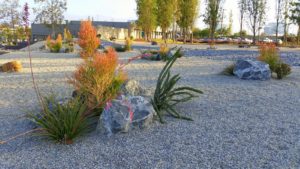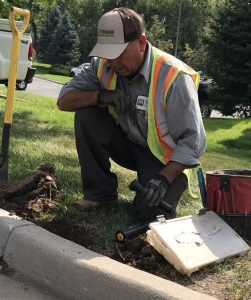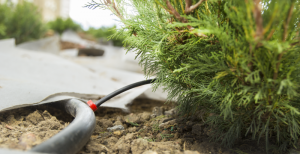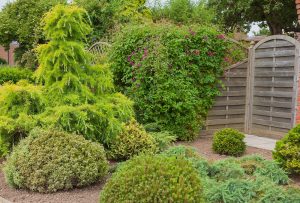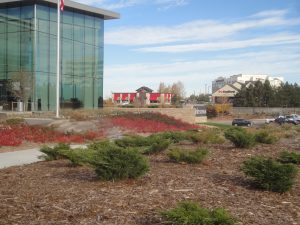High summer heat can severely affect our trees, shrubs and turf grasses. With the climbing temperatures comes higher water costs. If you are a commercial property manager looking for ways to keep your landscape healthy and costs down, drip irrigation is your answer.
What is drip irrigation?
Drip irrigation is a low volume watering system that applies a small amount of water directly to plants over a period of time.
 The benefits of drip irrigation:
The benefits of drip irrigation:
Plant health
Landscape experts agree that low volume irrigation systems promote plant health by reducing changes in soil moisture levels. Drip irrigation can also be beneficial in avoiding plant diseases by limiting the amount of water on the plant’s foliage. A properly designed drip irrigation system will deliver water to your landscape at a uniform soil depth. This will bring the water to the root zone instead of to the surface of the planted area.
Water waste
Water is applied where it is most needed and is not wasted on unplanted areas or on streets and sidewalks. Since the drip system is located closer to the root, little water is lost in evaporation. As a result, this process makes it extremely effective in controlling landscape water usage.
Maintenance costs
Another benefit of drip irrigation is lower maintenance costs. Because sprinkler systems can spray water onto unplanted areas, property managers must factor in the cost of eroded walkways and pavement, rotted wood fences, and peeling paint and plaster.
A properly designed and installed drip irrigation system can be a low cost and low maintenance option for many property owners. Contact the irrigation specialists at Terracare Associates to make healthy landscape changes that will meet all of your drip irrigation needs.

